Abstract
Malarial paroxysms due to Plasmodium vivax were studied for alterations in whole serum complement (C′) and certain C′ components. The objective was to relate C′ values with events of the parasite cycle during schizogony and with the febrile pattern. Substantial decreases in C′ were found in 9 of 18 paroxysms studied during relapse. In contrast, only one of 22 paroxysms occuring during the primary attack was associated with a striking depression in C′, and this case exhibited certain characteristics of a relapse paroxysm. The mean change in C′ levels during paroxysms in relapse (-23%) was significantly different from paroxysms of the primary attack (-2%). Depletion of C′ was associated directly with degree of parasitemia and presence of complement-fixing (CF) antibody. Lowest levels of C′ were found within a few hours after completion of schizont repture and peak fever. C4 levels reflected changes in whole serum C′ and appeared to be a more sensitive indicator of C′ alterations during malaria. While the alterations in C4 as well as C1 and C2 indicated that the classical C′ pathway was involved, some preliminary results showed little or no depletion of late components, C3 and C6. Overall results are compatible with C′ activation and depletion during or soon after schizont repture if parasite density is sufficiently high and if CF antibody is present.
Full text
PDF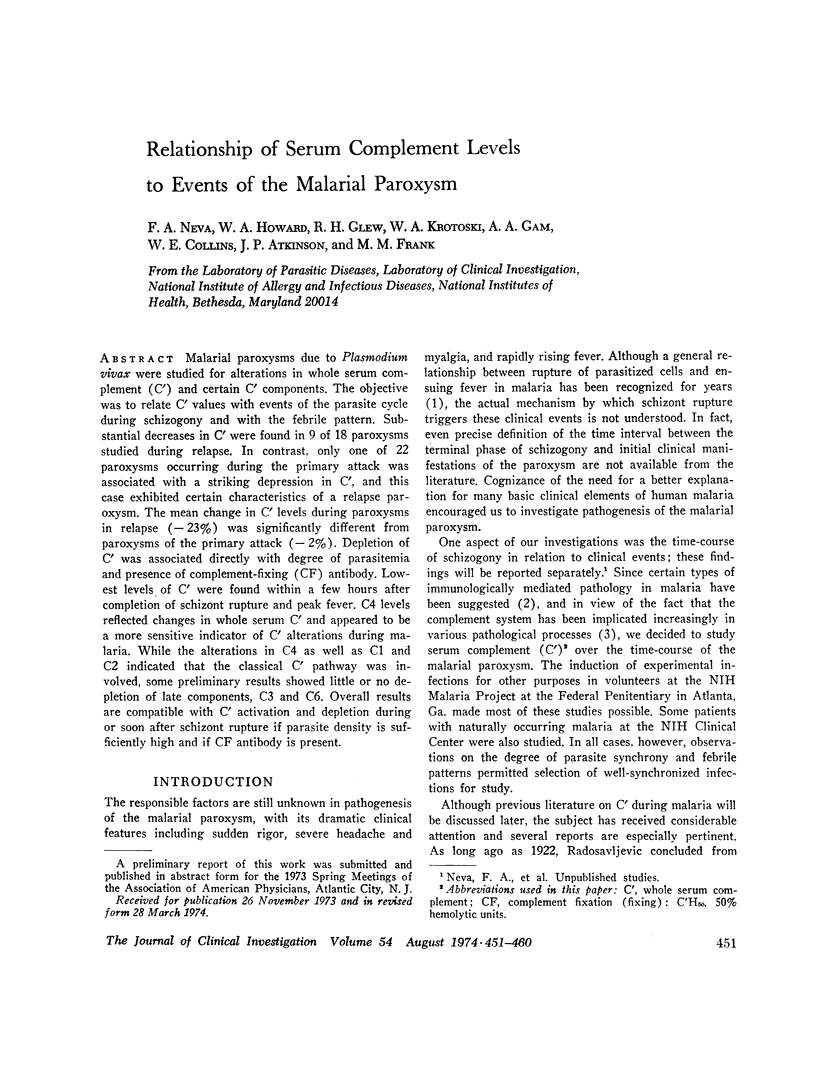
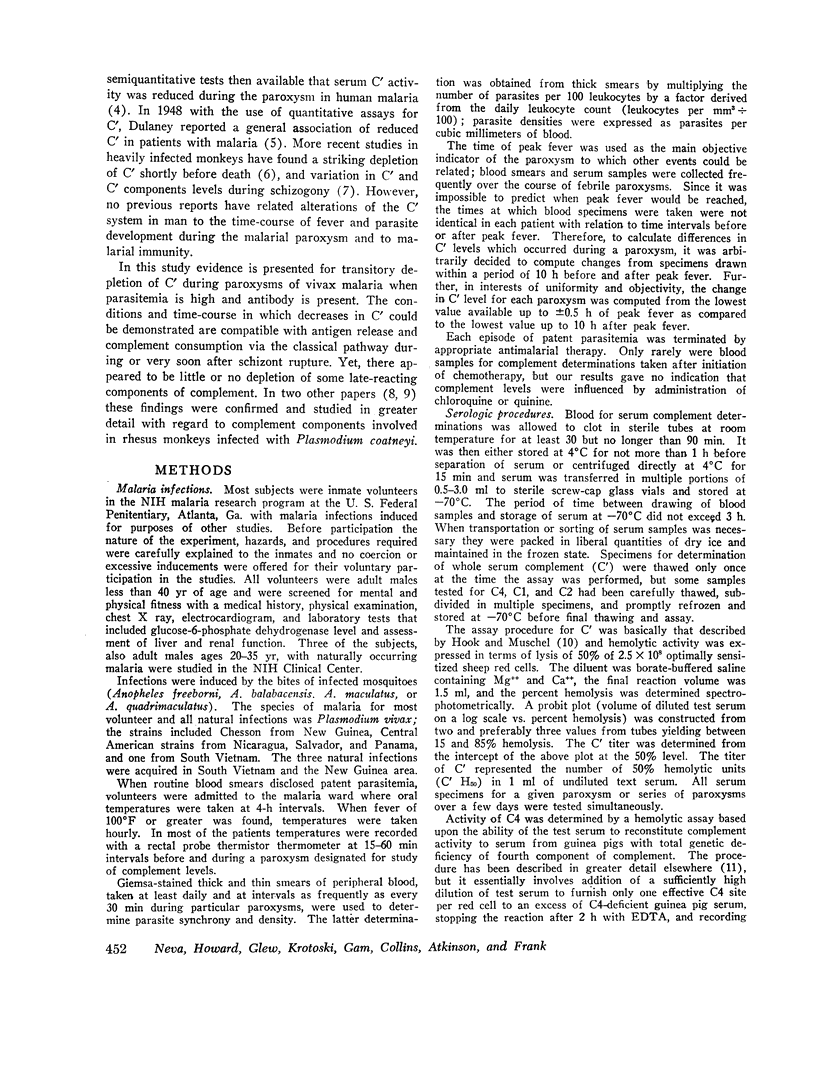
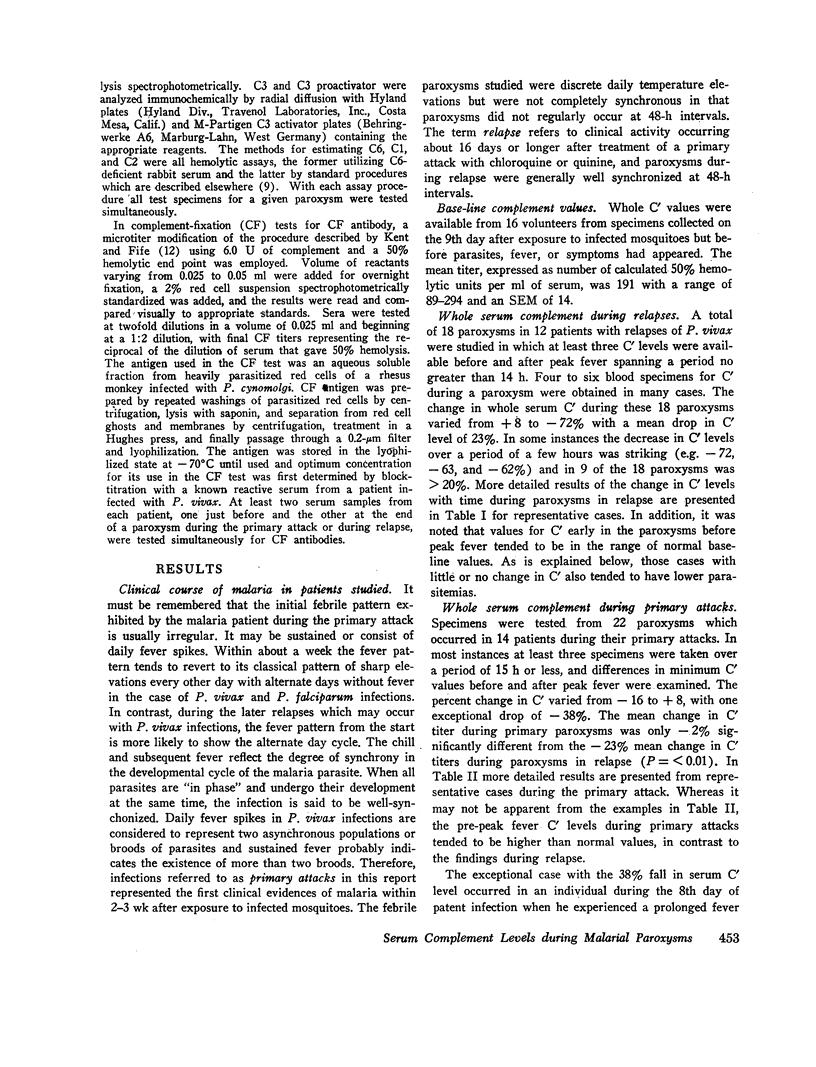
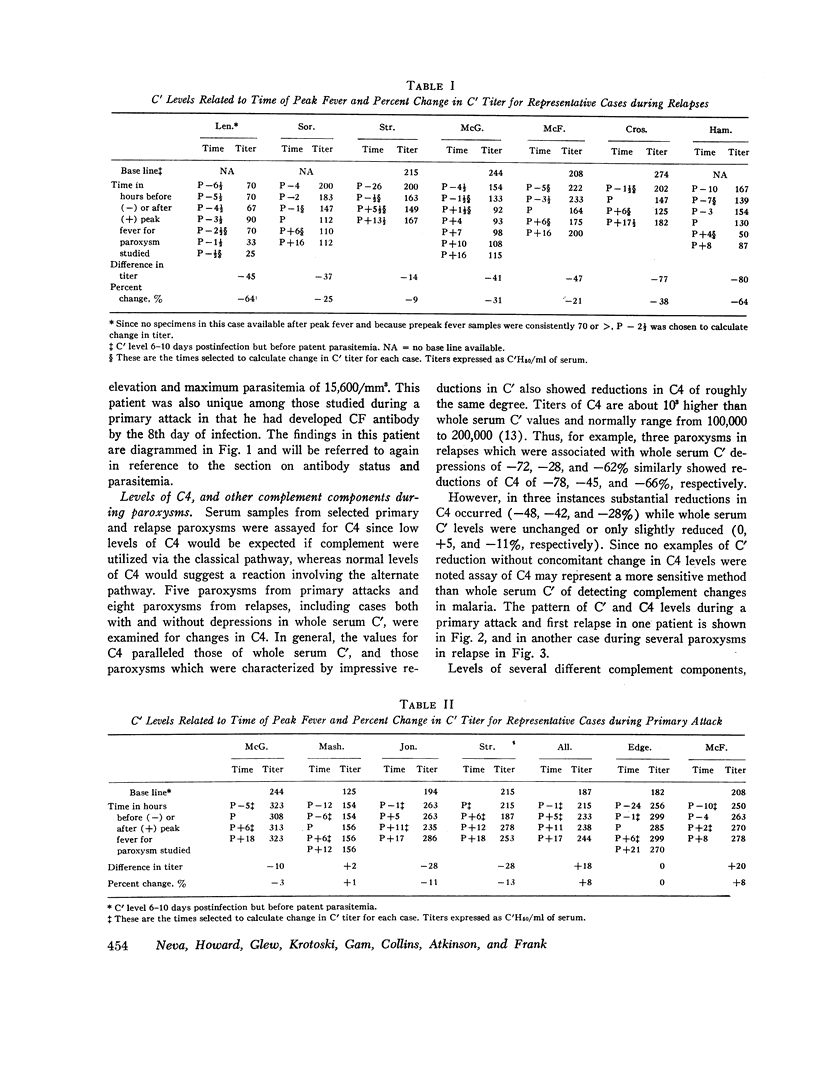
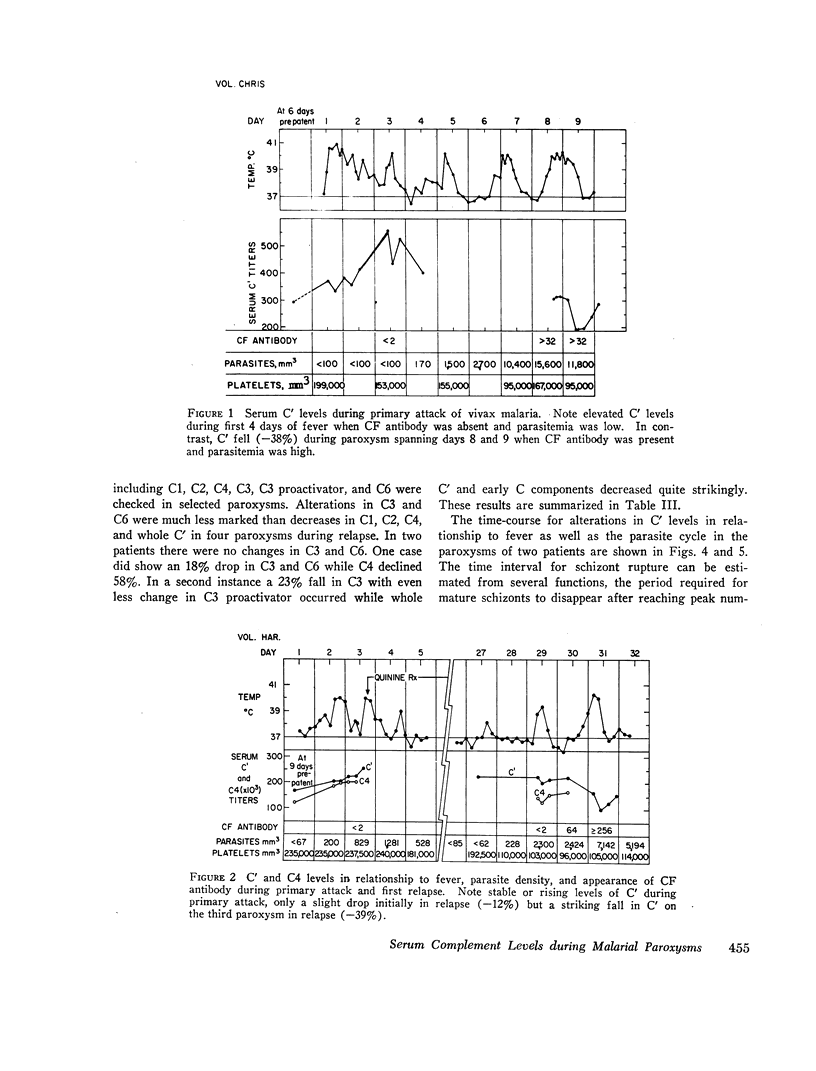
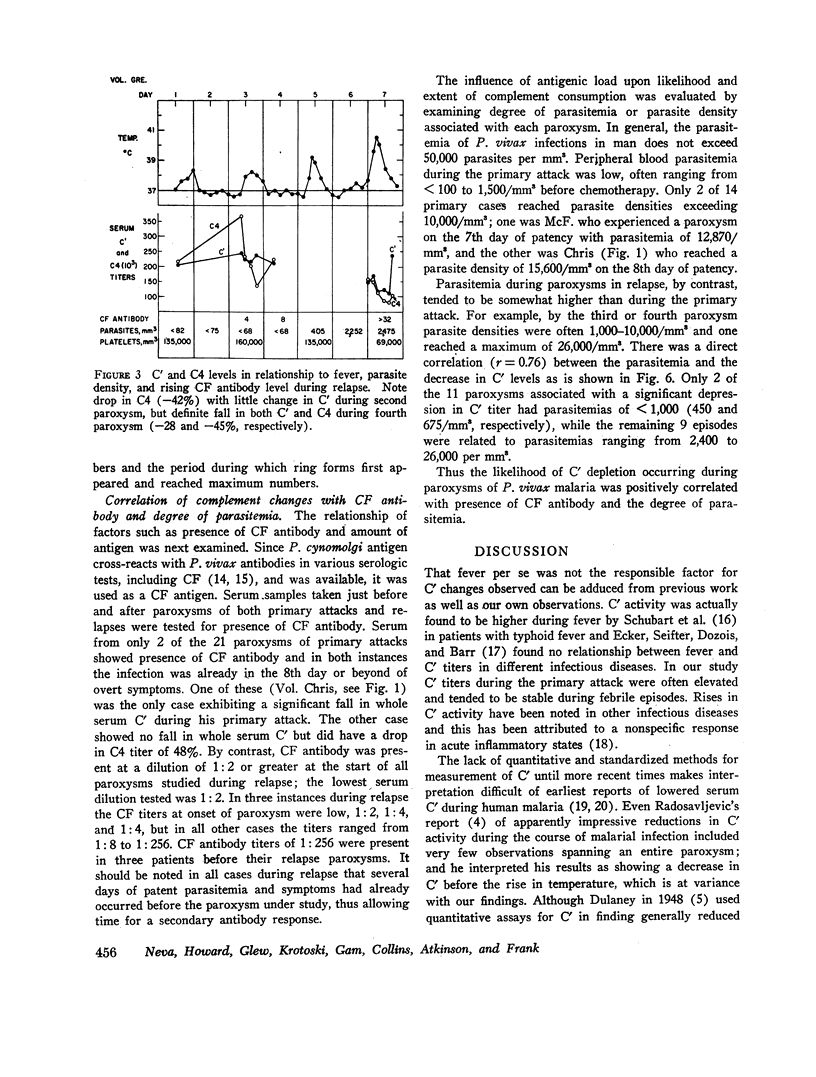
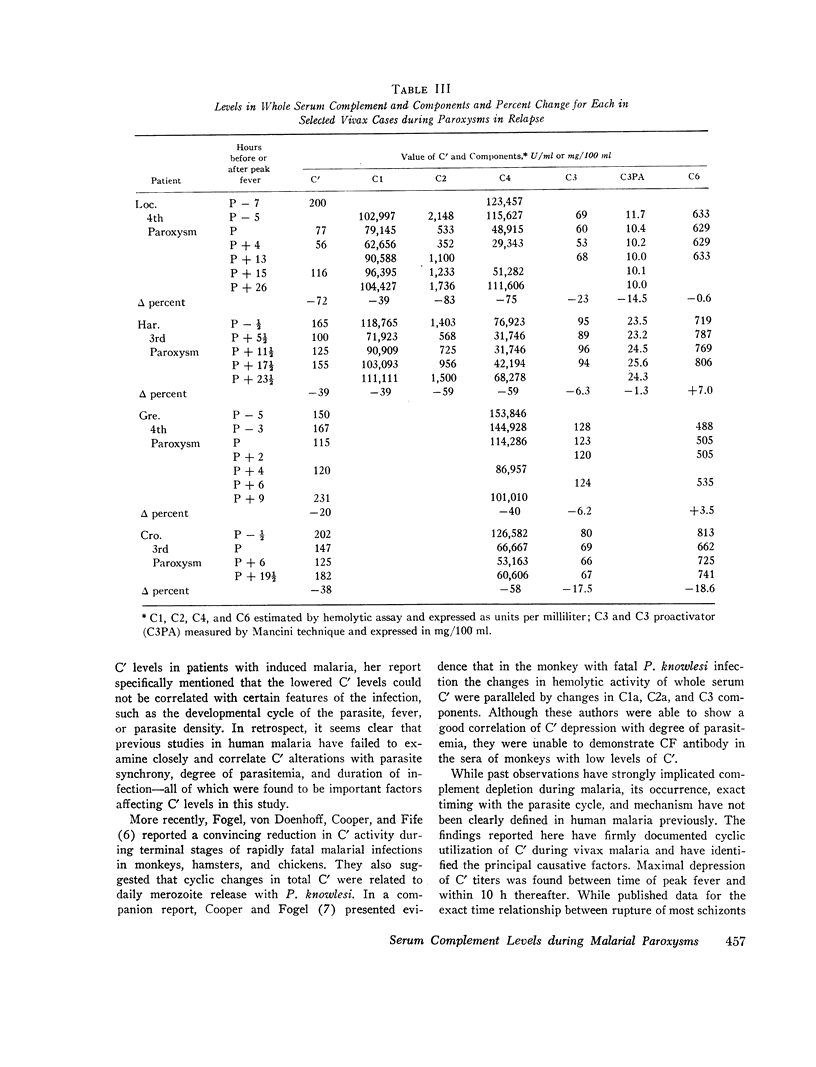
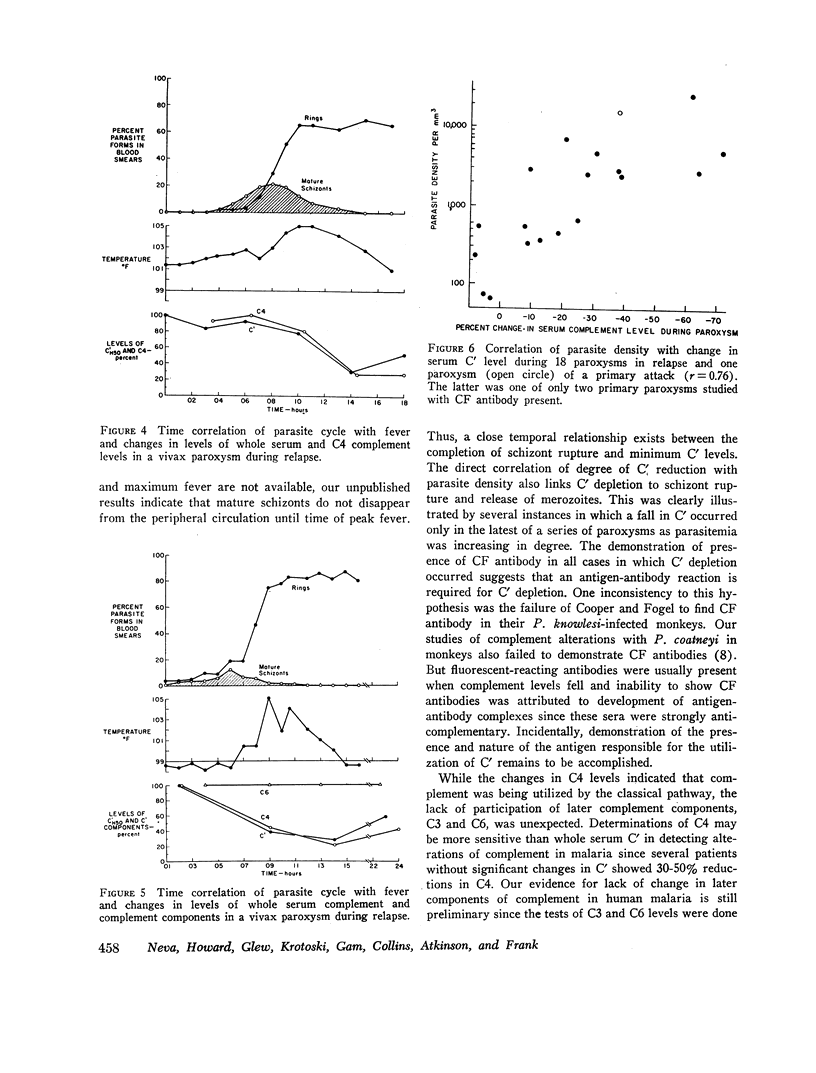
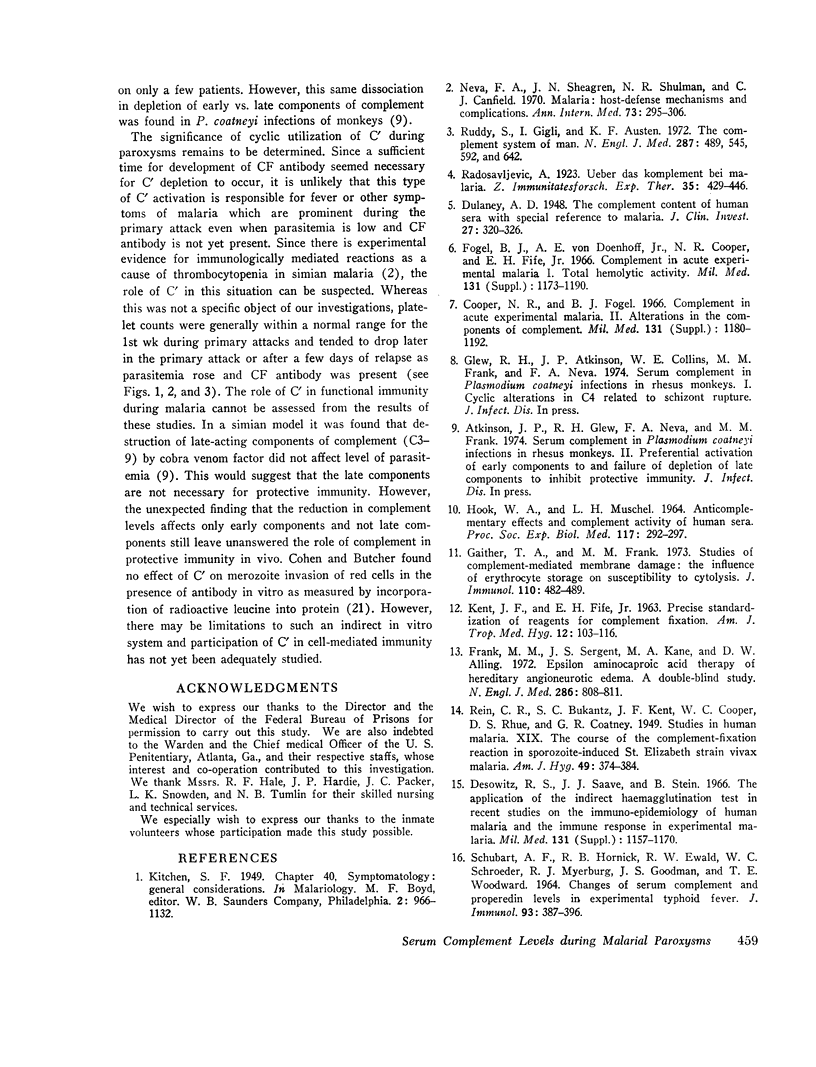
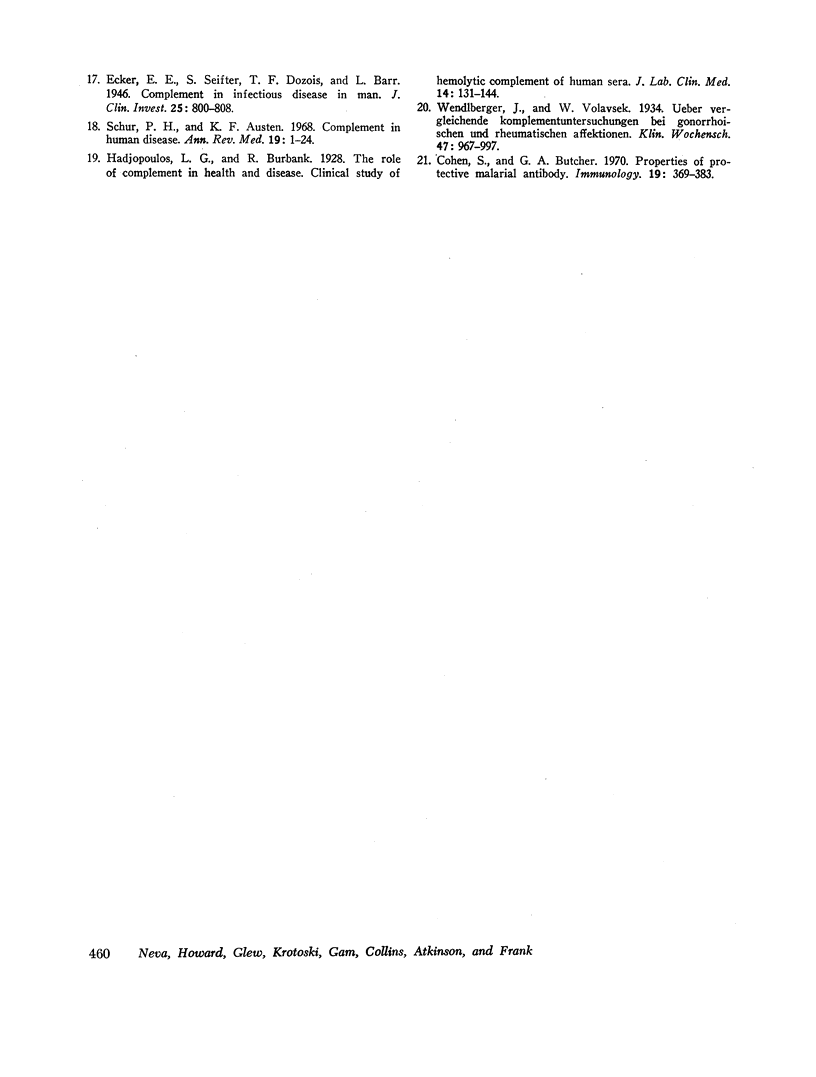
Selected References
These references are in PubMed. This may not be the complete list of references from this article.
- Cohen S., Butcher G. A. Properties of protective malarial antibody. Immunology. 1970 Aug;19(2):369–383. [PMC free article] [PubMed] [Google Scholar]
- Cooper N. R., Fogel B. J. Complement in acute experimental malaria. II. Alterations in the components of complement. Mil Med. 1966 Sep;131(9 Suppl):1180–1190. [PubMed] [Google Scholar]
- Desowitz R. S., Saave J. J., Stein B. The application of the indirect haemagglutination test in recent studies on the immuno-epidemiology of human malaria and the immune response in experimental malaria. Mil Med. 1966 Sep;131(9):1157–1166. [PubMed] [Google Scholar]
- Dulaney A. D., Priest J. B., Almeda M. L., Parker B. THE COMPLEMENT CONTENT OF HUMAN SERA WITH ESPECIAL REFERENCE TO MALARIA. J Clin Invest. 1948 May;27(3 Pt 1):320–326. doi: 10.1172/JCI101960. [DOI] [PMC free article] [PubMed] [Google Scholar]
- Ecker E. E., Seifter S., Dozois T. F., Barr L. COMPLEMENT IN INFECTIOUS DISEASE IN MAN. J Clin Invest. 1946 Nov;25(6):800–808. doi: 10.1172/JCI101766. [DOI] [PMC free article] [PubMed] [Google Scholar]
- Fogel B. J., Von Doenhoff A. E., Jr, Cooper N. R., Fife E. H., Jr Complement in acute experimental malaria. I. Total hemolytic activity. Mil Med. 1966 Sep;131(9 Suppl):1173–1179. [PubMed] [Google Scholar]
- Frank M. M., Sergent J. S., Kane M. A., Alling D. W. Epsilon aminocaproic acid therapy of hereditary angioneurotic edema. A double-blind study. N Engl J Med. 1972 Apr 13;286(15):808–812. doi: 10.1056/NEJM197204132861503. [DOI] [PubMed] [Google Scholar]
- Gaither T. A., Frank M. M. Studies of complement-mediated membrane damage: the influence of erythrocyte storage on susceptibility to cytolysis. J Immunol. 1973 Feb;110(2):482–489. [PubMed] [Google Scholar]
- HOOK W. A., MUSCHEL L. H. ANTICOMPLEMENTARY EFFECTS AND COMPLEMENT ACTIVITY OF HUMAN SERA. Proc Soc Exp Biol Med. 1964 Oct;117:292–297. doi: 10.3181/00379727-117-29561. [DOI] [PubMed] [Google Scholar]
- KENT J. F., FIFE E. H., Jr Precise standardization of reagents for complement fixation. Am J Trop Med Hyg. 1963 Jan;12:103–116. doi: 10.4269/ajtmh.1963.12.103. [DOI] [PubMed] [Google Scholar]
- Neva F. A., Sheagren J. N., Shulman N. R., Canfield C. J. Malaria: host-defense mechanisms and complications. Ann Intern Med. 1970 Aug;73(2):295–306. doi: 10.7326/0003-4819-73-2-295. [DOI] [PubMed] [Google Scholar]
- Ruddy S., Gigli I., Austen K. F. The complement system of man (second of four parts). N Engl J Med. 1972 Sep 14;287(11):545–549. doi: 10.1056/NEJM197209142871106. [DOI] [PubMed] [Google Scholar]
- SCHUBART A. F., HORNICK R. B., EWALD R. W., SCHROEDER W. C., MYERBURG R. J., GOODMAN J. S., WOODWARD T. E. CHANGES OF SERUM COMPLEMENT AND PROPERDIN LEVELS IN EXPERIMENTAL TYPHOID FEVER. A LONGITUDINAL STUDY OF THE DISEASE INCLUDING THE INCUBATION PERIOD AND THE PHASE OF RECOVERY FOLLOWING TREATMENT WITH CHLORAMPHENICOL. J Immunol. 1964 Sep;93:387–396. [PubMed] [Google Scholar]
- Schur P. H., Austen K. F. Complement in human disease. Annu Rev Med. 1968;19:1–24. doi: 10.1146/annurev.me.19.020168.000245. [DOI] [PubMed] [Google Scholar]


